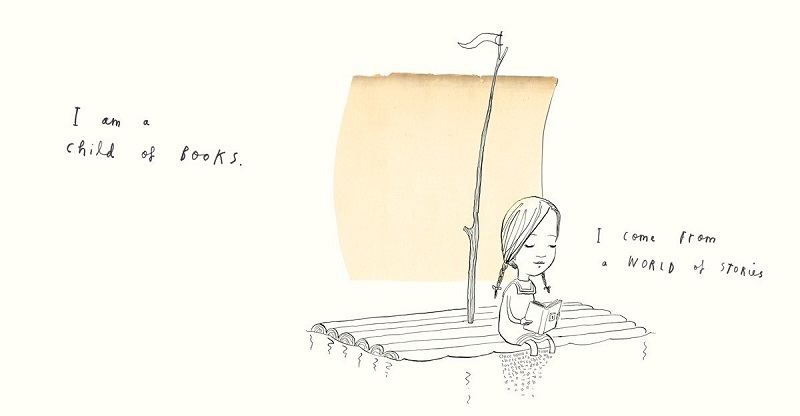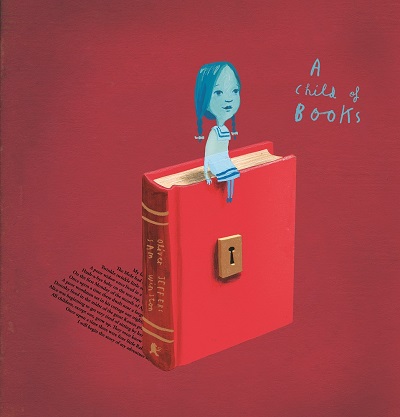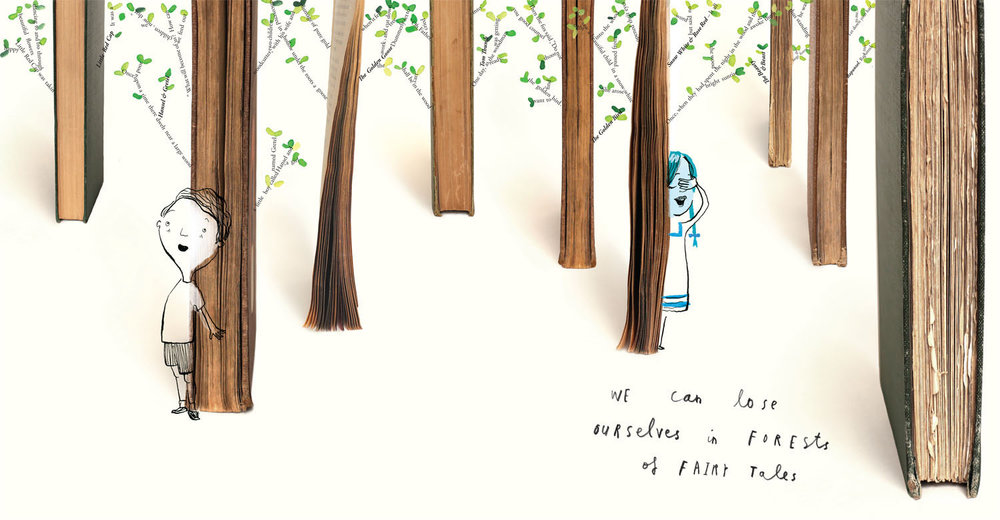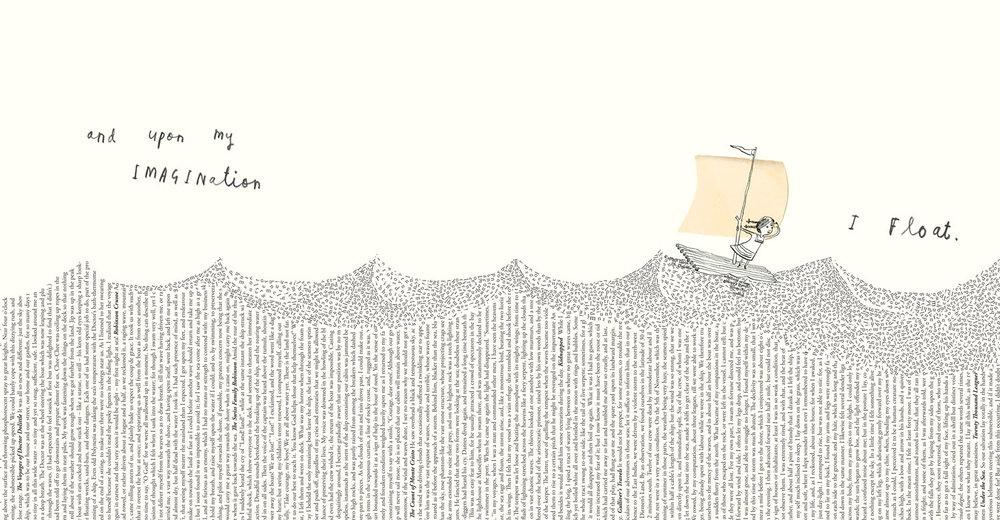
Children are often drawn to what adults call nonsense. How many kids do you know who run off to study the multiplication table or decide to fill forty pages with perfect cursive script? I don’t know any. I certainly wasn’t that kid. I learned the multiplication table with tears in my eyes, cramming my study into the last weeks of August, and, as for the cursive practice, my mom had to finish it for me, because the teacher called and yelled that it was overdue.

Reading, however, was an entirely different story. Everyone in our family reads and so I came to love books very early on. My parents had the habit of reading everything aloud, which made for some comical scenes. Over dinner, for example, my mom might read the consumer information from a box of toothpaste, filling the text in with her own commentary. It was funny and witty, and she did it with such a conspiratory look that I immediately wanted to read the message myself and see if she was kidding.
Reading became our game—one that no one, including me, took seriously. That’s why I never saw it as a skill to learn or an assignment to be completed. If I had encountered Oliver Jeffers’s A Child of Books Newest English edition: Candlewick Press, 2016. ISBN 9780763690779. then, I would have said it was a book about me. In the story, a little girl from the world of books sets off on a journey across the ocean of fantasy. She is made of thousands of words and her imagination allows her to reach the farthest corners of the universe. The child of books needs a friend but can’t find one. (Mikhail Prishvin’s Mikhail Prishvin was a Russian/Soviet writer. famous words on language come to mind: “The point was not so much to learn, as meet my native language as a friend, and I had to seek out that meeting.”)
In the end, thanks to her love of language, the girl finds a friend in a fellow reader. At first, he seems deeply unhappy, a figure of a small child drawn in drab, gray tones. But as he comes to know the world of books a transformation takes place: his face lights up with a wide smile and his eyes begin to sparkle. Under his arm he has a little red book just like the one the actual reader is holding at that very moment.

Image: samwinston.com
This personalization allows the real reader holding this book to feel like part of the story. Each page has a little tale about the advantages of reading. Reading and the imagination allow you to travel anywhere without leaving your house. If everyday life seems boring, you can discover a whole universe in books, meet its heroes and learn from them.
Reading this story is like participating in theatre: everything is easy, fun, and lively. You take on the role of the little reader, setting off with him on the journey that the small book offers, and you return from that journey forever changed.
What matters in this story is not how it’s written (though the text undoubtedly plays an important role), but rather how it’s illustrated by Sam Winston. At first, there is almost no color in the pictures, but as the reader sinks into the world of the book, more and more colors fill the pages. It seems as though the lines and brushstrokes were made haphazardly, but that’s not the case. There is a structure—but only an unorthodox thinker can see it. Mountains, fields, rivers, and forest paths are all made up of words, as though the letters were building blocks. I think the authors wanted to show that words are the structural units of language, forming the basis for sentences and whole narratives. Incidentally, the texts for this book are hand-picked from the works of classic literature.

Image: samwinston.com
In order to read this story, you have to turn the book in your hands. If our heroes set off mountain-climbing, the mountains are built of the following words: “We started off. The five lean jades dragged our wagons with difficulty along the tortuous road up Mount Güt.” The author of the quote and the title of the original work are always in bold, so that the reader can find and read the book in its entirety. For instance, these words describing an ascent up Mount Güt are from Mikhail Lermontov’s classic novel, A Hero of Our Time The Russian edition was adapted to use passages from Russian literature. The original edition features excerpts of English language children’s classics including Treasure Island, Little Women, and The Wizard of Oz. .
I enjoyed finding lines from books we had already studied in school. I think a younger child might prefer to study the pages with forests and skies, because the trees are made of Russian folk tales, while the clouds consist of lullabies.
A Child of Books is a love letter to language and classic literature and an example of how a little book can have so much to share. For a young person to fall in love with reading, you shouldn’t force him to read, but instead present reading as a fun game. Only then will a child become a bookworm.
Darya Ponomaryova, 16
Translated from the Russian by Alisa Cherkasova
Cover image: brainpickings.org
Follow us on Facebook.
